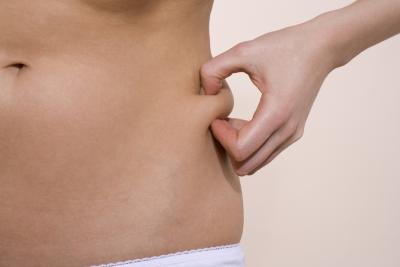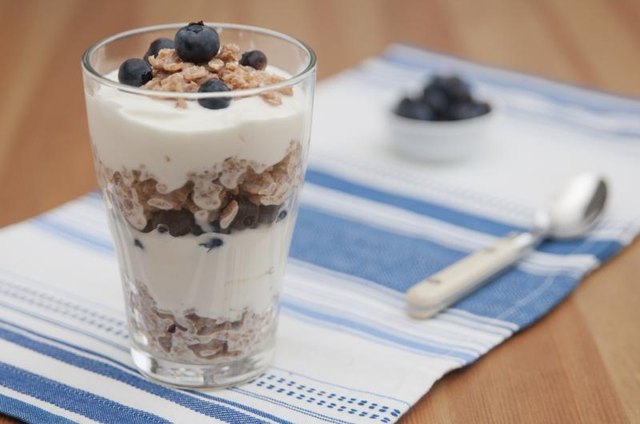Aerts R (1996) Nutrient resorption from senescing leaves of perennials: are there general patterns? J Ecol 84:597–608
CrossRef
Aerts R, Chapin FS III (2000) The mineral nutrition of wild plants revisited: a re-evaluation of processes and patterns. Adv Ecol Res 30:1–67
CrossRef
Andivia E, Fernández M, Vázquez-Piqué J (2014) Assessing the effect of late-season fertilization on holm oak plant quality: insights from morpho-nutritional characterizations and water relations parameters. New For 45:149–163
Andivia E, Márquez-García B, Vázquez-Piqué J, Córdoba F, Fernández M (2012) Autumn fertilization with nitrogen improves nutritional status, cold hardiness and the oxidative stress response of holm oak (Quercus ilex ssp. ballota [Desf.] Samp) nursery seedlings. Trees 26:311–320
Aphalo P, Rikala R (2003) Field performance of silver-birch planting-stock grown at different spacing and in containers of different volume. New For 25:93–108
CrossRef
Baber O, Slot M, Celis G, Kitajima K (2014) Diel patterns of leaf carbohydrate concentrations differ between seedlings and mature trees of two sympatric oak species. Botany 92:535–540
CrossRef
Bazot S, Barthes L, Blanot D, Fresneau C (2013) Distribution of non-structural nitrogen and carbohydrate compounds in mature oak trees in a temperate forest at four key phenological stages. Trees 27:1023–1034
CrossRef
Binnie S, Grossnickle SC, Roberts DR (1994) Fall acclimation patterns of interior spruce seedlings and their relationship to changes in vegetative storage proteins. Tree Physiol 14:1107–1120
PubMedCrossRef
Birge ZKD, Salifu KF, Jacobs DF (2006) Modified exponential nitrogen loading to promote morphological quality and nutrient storage of bareroot-cultured
Quercus rubra and
Quercus alba seedlings. Scan J For Res 21:306–316
CrossRef
Britto DT, Kronzucker HJ (2002) NH4 + toxicity in higher plants: a critical review. J Plant Physiol 159:567–584
Burdett AN (1990) Physiological processes in plantation establishment and the development of specifications for forest planting stock. Can J For Res 20:415–427
CrossRef
Canadell J, Lopez-Soria L (1998) Lignotuber reserves support regrowth following clipping of two Mediterranean shrubs. Funct Ecol 12:31–38
CrossRef
Canham CD, Kobe RK, Latty EF, Chazdon RL (1999) Interspecific and intraspecific variation in tree seedling survival effects of allocation to roots versus carbohydrate reserves. Oecologia 121:1–11
CrossRef
Cannell MGR, Tabbush PM, Deans JD, Hollingsworth MK, Sheppard LJ, Philipson JJ, Murray MB (1990) Sitka spruce and Douglas fir seedlings in the nursery and in cold storage: Root growth potential, carbohydrate content, dormancy, frost hardiness and mitotic index. Forestry 63:9–27
CrossRef
Chapin FS III (1980) The mineral nutrition of wild plants. Ann Rev Ecol Syst 11:233–260
CrossRef
Chapin FS III, Schulze ED, Mooney HA (1990) The ecology and economics of storage in plants. Ann Rev Ecol Syst 21:423–447
Chaves MM, Maroco JP, Pereira JS (2003) Understanding plant responses to drought-from genes to the whole plant. Funct Plant Biol 30:239–264
CrossRef
Cheng L, Fuchigami LH (2002) Growth of young apple trees in relation to reserve nitrogen and carbohydrates. Tree Physiol 22:1297–1303
PubMedCrossRef
Cherbuy B, Joffre R, Guillon D, Rambal S (2001) Internal remobilization of carbohydrates, lipids, nitrogen and phosphorus in the Mediterranean evergreen oak
Quercus ilex. Tree Physiol 21:9–17
PubMedCrossRef
Cruz C, Lips SG, Martins-Louçao MA (1993) Interactions between nitrate and ammonium during uptake by carob seedlings and the effect of the form of earlier nitrogen nutrition. Physiol Plant 89:544–551
Cruz A, Perez B, Moreno JM (2003) Resprouting of the Mediterranean-type shrub
Erica australis with modified lignotuber carbohydrate content. J Ecol 91:348–356
CrossRef
Cuesta B, Villar-Salvador P, Puértolas J, Jacobs DF, Rey-Benayas JM (2010) Why do large, nitrogen rich seedlings better resist stressful transplanting conditions? A physiological analysis in two functionally contrasting Mediterranean forest species. For Ecol Manag 260:71–78
CrossRef
del Arco JM, Escudero A, Vega Garridoical M (1991) Effects of site characteristics on nitrogen retranslocation from senescing leaves. Ecology 72:701–708
CrossRef
Dietze MC, Sala A, Carbone MS, Czimczik CI, Mantooth JA, Richardson AD, Vargas R (2014) Nonstructural carbon in woody plants. Annu Rev Plant Biol 65:667–687
PubMedCrossRef
Dominguez-Lerena S, Herrero-Sierra N, Carrasco-Manzano I, Ocaña Bueno L, Peñuelas Rubira JL, Mexal JG (2006) Container characteristics influence
Pinus pinea seedling development in the nursery and field. For Ecol Manag 221:63–71
CrossRef
Duman JG, Wisniewski MJ (2014) The use of antifreeze proteins for frost protection in sensitive crop plants. Environ Exp Bot 106:60–69
CrossRef
Dumroese RK, Sung S-JS, Pinto JR, Ross-Davis A, Scott DA (2013) Morphology, gas exchange, and chlorophyll content of longleaf pine seedlings in response to rooting volume, copper root pruning, and nitrogen supply in a container nursery. New For 44:881–897
CrossRef
Dyckmans J, Flessa H (2002) Influence of tree internal nitrogen reserves on the response of beech (
Fagus sylvatica) trees to elevated atmospheric carbon dioxide concentration. Tree Physiol 22:41–49
PubMedCrossRef
Galiano L, Martínez-Vilalta J, Lloret F (2011) Carbon reserves and canopy defoliation determine the recovery of Scots pine 4 yr after a drought episode. New Phytol 190:750–759
PubMedCrossRef
Galvez DA, Landh SM, Tyree MT (2013) Low root reserve accumulation during drought may lead to winter mortality in poplar seedlings. New Phytol 198:139–148
PubMedCrossRef
Gilson A, Barthes L, Delpierre N, Dufrêne É, Fresneau C, Bazot S (2014) Seasonal changes in carbon and nitrogen compound concentrations in a
Quercus petraea chronosequence. Tree Physiol 34:716–729
PubMedCrossRef
Gordon JC, Larson PR (1968) Seasonal course of photosynthesis, respiration, and distribution of
14C in young
Pinus resinosa trees as related to wood formation. Plant Physiol 43:1617–1624
PubMedCentralPubMedCrossRef
Grelet G-A, Alexander IJ, Proe MF, Frossard JS, Millard P (2001) Leaf habit influences nitrogen remobilization in
Vaccinium species. J Exp Bot 52:993–1002
PubMedCrossRef
Grossnickle S (2005) Importance of root growth in overcoming planting stress. New For 30:273–294
CrossRef
Grossnickle SC (2012) Why seedlings survive: influence of plant attributes. New For 43:711–738
CrossRef
Grossnickle S, South D (2014) Fall acclimation and the lift/store pathway: effect on reforestation. Open For Sci J 7:1–20
Grossnickle SC, Arnott JT, Major JE, Tschaplinski TJ (1991) Influence of dormancy induction treatments on western hemlock seedlings. I. Seedling development and stock quality assessment. Can J For Res 21:164–174
CrossRef
Guehl JM, Clement A, Kaushal P, Aussenac G (1993) Planting stress, water status and non-structural carbohydrate concentrations in Corsican pine seedlings. Tree Physiol 12:173–183
PubMedCrossRef
Guehl JM, Falconnet G, Gruez J (1989) Caractéristiques physiologiques et survie après plantation de plants de
Cedrus atlantica élevés en conteneurs sur différents types de substrats de culture. Ann Sci For 46:1–14
CrossRef
Guérard N, Pascale M, Claude B, Lieutier F, Erwin D (2007) Do trees use reserve or newly assimilated carbon for their defense reactions? A
13C labeling approach with young Scots pines inoculated with a bark-beetle-associated fungus (
Ophiostoma brunneo ciliatum). Ann For Sci 64:601–608
CrossRef
Hartmann H, Ziegler W, Kolle O, Trumbore S (2013) Thirst beats hunger-declining hydration during drought prevents carbon starvation in Norway spruce saplings. New Phytol 200:340–349
Harvey HP, van den Driessche R (1997) Nutrition, xylem cavitation and drought resistance in hybrid poplar. Tree Physiol 17:647–654
PubMedCrossRef
Harvey HP, van den Driessche R (1999) Poplar nutrient resorption in fall or drought: influence of nutrient status and clone. Can J For Res 29:1916–1925
CrossRef
Hawkins BJ, Robbins S, Porter RB (2014) Nitrogen uptake over entire root systems of tree seedlings. Tree Physiol 34:334–342
PubMedCrossRef
Heredia N, Oliet J, Villar-Salvador P, Benito LF, Peñuelas JL (2014) Fertilization regime interacts with fall temperature in the nursery to determine the frost and drought tolerance and nutrient status of the Mediterranean oak
Quercus ilex L. For Ecol Manag 311:50–59
CrossRef
Hoch G, Körner C (2003) The carbon charging of pines at the climatic treeline: a global comparison. Oecologia 135:10–21
PubMedCrossRef
Hoch G, Richter A, Körner C (2003) Non-structural carbon compounds in temperate forest trees. Plant Cell Environ 26:1067–1081
CrossRef
Hoffmann WA, Orthen B, Nascimento PKVD (2003) Comparative fire ecology of tropical savanna and forest trees. Funct Ecol 17:720–726
Hsiao TC (1973) Plant responses to water stress. Annu Rev Plant Physiol 24:519–574
CrossRef
Insley H, Buckley G (1985) The influence of desiccation and root pruning on the survival and growth of broadleaved seedlings. J Hortic Sci 60:377–387
Islam MA, Apostol KG, Jacobs DF, Dumroese RK (2009) Fall fertilization of
Pinus resinosaseedlings: nutrient uptake, cold hardiness, and morphological development. Ann For Sci 66:704–712
CrossRef
Keel SG, Schädel C (2010) Expanding leaves of mature deciduous forest trees rapidly become autotrophic. Tree Physiol 30:1253–1259
PubMedCrossRef
Körner C (2003) Carbon limitation in trees. J Ecol 9:4–17
CrossRef
Kozlowski TT (1992) Carbohydrate sources and sinks in woody plants. Bot Rev 58:107–222
CrossRef
Lambers H, Chapin FS, Pons TL (2008) Plant physiological ecology. Springer, New York
CrossRef
Landhäusser SM, Pinno BD, Lieffers VJ, Chow PS (2012a) Partitioning of carbon allocation to reserves or growth determines future performance of aspen seedlings. For Ecol Manag 275:43–51
CrossRef
Landhäusser SM, Rodriguez-Alvarez J, Marenholtz EH, Lieffers VJ (2012b) Effect of stock type characteristics and time of planting on field performance of aspen (
Populus tremuloidesMichx.) seedlings on boreal reclamation sites. New For 43:679–693
CrossRef
Landis TD, Tinus RW, McDonald SE, Barnett JP (1989) The container tree nursery manual: seedling nutrition and irrigation, vol 4. USDA Forest Service Agriculture Handbook, p 674
Levitt J (1980) Responses of plants to environmental stress: chilling, freezing, and high temperature stresses, vol 1, 2nd edn. Academic Press, New York
Li G, Liu Y, Zhu Y, Li Q, Dumroese RK (2012) Effect of fall-applied nitrogen on growth, nitrogen storage, and frost hardiness of bareroot
Larix olgensis seedlings. Silva Fenn 46:345–354
CrossRef
Luxmoore RJ, Oren R, Sheriff DW, Thomas RB (1995) Source–sink–storage relationships of conifers. In: Smith W, Hinckley T (eds) Resource physiology of conifers. Academic Press, San Diego, pp 179–216
CrossRef
Maillard P, Garriou D, Deléens E, Gross P, Guehl JM (2004) The effects of lifting on mobilisation and new assimilation of C and N during regrowth of transplanted Corsican pine seedlings. A dual 13C and 15N labelling approach. Ann For Sci 61:795–805
Malik V, Timmer VR (1996) Growth, nutrient dynamics, and interspecific competition of nutrient-loaded black spruce seedlings on a boreal mixedwood site. Can J For Res 26:1651–1659
CrossRef
Marshall JD (1985) Carbohydrate status as a measure of seedling quality. In: Duryea ML (ed) Evaluation of seedling quality. Principles and procedures. Predictive ability of major tests. Oregon Sate University, Corvallis, pp 49–58
Mattsson A (1997) Predicting field performance using seedling quality assessment. New For 13:227–252
CrossRef
McArtney S, Ferree D (1999) Shading effects on dry matter partitioning, remobilization of stored reserves and early season vegetative development of grapevines in the year after treatment. J Am Soc Hortic Sci 124:591–597
McDowell N, Pockman WT, Allen CD, Breshears DD, Cobb N, Kolb TE, Plaut J, Sperry JS, West A, Williams DG, Yepez EA (2008) Mechanisms of plant survival and mortality during drought: why do some plants survive while others succumb to drought? New Phytol 178:719–739
PubMedCrossRef
McDowell NG (2011) Mechanisms linking drought, hydraulics, carbon metabolism, and vegetation mortality. Plant Physiol 155:1051–1059
PubMedCentralPubMedCrossRef
McKay HM (1997) A review of the effect of stresses between lifting and planting on the nursery stock quality and performance. New For 13:369–399
CrossRef
McPherson K, Williams K (1998) The role of carbohydrate reserves in the growth, resilience, and persistence of cabbage palm seedlings (
Sabal palmetto). Oecologia 117:460–468
CrossRef
Millard P (1988) The accumulation and storage of nitrogen by herbaceous plants. Plant Cell Environ 11:1–8
CrossRef
Millard P (1996) Ecophysiology of the internal cycling of nitrogen for tree growth. Z Pflanzenernah Bodekd 159:1–10
Millard P, Grelet G (2010) Nitrogen storage and remobilization by trees: ecophysiological relevance in a changing world. Tree Physiol 30:1083–1095
PubMedCrossRef
Millard P, Hester A, Wendler R, Baillie G (2001) Interspecific defoliation responses of trees depend on sites of winter nitrogen storage. Funct Ecol 15:535–543
CrossRef
Millard P, Neilsen GH (1989) The influence of nitrogen supply on the uptake and remobilisation of stored N for the seasonal growth of apple trees. Ann Bot 63:301–309
Millard P, Proe MF (1991) Leaf demography and the seasonal internal cycling of nitrogen in sycamore (
Acer pseudoplatanus L.) in relation to nitrogen supply. New Phytol 117:587–596
CrossRef
Millard P, Proe MF (1993) Nitrogen uptake, partitioning and internal cycling in
Picea sitchensis (Bong.) Carr. as influenced by nitrogen supply. New Phytol 125:113–119
CrossRef
Millard P, Sommerkorn M, Grelet G-A (2007) Environmental change and carbon limitation in trees: a biochemical, ecophysiological and ecosystem appraisal. New Phytol 175:11–28
PubMedCrossRef
Millet J, Millard P, Hester AJ, McDonald AJS (2005) Do competition and herbivory alter the internal nitrogen dynamics of birch saplings? New Phytol 168:413–422
Mitchell PJ, Grady APO, Tissue DT, White DA, Ottenschlaeger ML, Pinkard EA (2013) Drought response strategies define the relative contributions of hydraulic dysfunction and carbohydrate depletion during tree mortality. New Phytol 197:862–872
PubMedCrossRef
Mollá S, Villar-Salvador P, García-Fayos P, Peñuelas Rubira JL (2006) Physiological and transplanting performance of
Quercus ilex L. (holm oak) seedlings grown in nurseries with different winter conditions. For Ecol Manag 237:218–226
CrossRef
Montville ME, Wenny DL, Dumroese RK (1996) Foliar fertilization during bud initiation improves container-grown ponderosa pine seedling viability. West J Appl For 11:114–119
Moreira B, Tormo J, Pausas JG (2012) To resprout or not to resprout: factors driving intraspecific variability in resprouting. Oikos 121:1577–1584
CrossRef
Morin X, Améglio T, Ahas R, Kurz-Besson C, Lanta V, Lebourgeois F, Miglietta F, Chuine I (2007) Variation in cold hardiness and carbohydrate concentration from dormancy induction to bud burst among provenances of three European oak species. Tree Physiol 27:817–825
PubMedCrossRef
Nambiar EKS, Fife DN (1987) Growth and nutrient retranslocation in needles of radiata pine in relation to nitrogen supply. Ann Bot 60:147–156
Nambiar EKS, Fife DN (1991) Nutrient retranslocation in temperate conifers. Tree Physiol 9:185–207
CrossRef
Noland TL, Mohammed GH, Scott M (1997) The dependence of root growth potential on light level, photosynthetic rate, and root starch content in jack pine seedlings. New For 13:105–119
CrossRef
O’Brien MJ, Leuzinger S, Philipson CD, Tay J, Hector A (2014) Drought survival of tropical tree seedlings enhanced by non-structural carbohydrate levels. Nat Clim Change 4:710–714
CrossRef
Ögren E, Nilsson T, Sundblad LG (1997) Relationship between respiratory depletion of sugars and loss of cold hardiness in coniferous seedlings over-wintering at raised temperatures: indications of different sensitivities of spruce and pine. Plant Cell Environ 20:247–253
CrossRef
Oliet JA, Artero F, Cuadros S, Puértolas J, Luna L, Grau JM (2012) Deep planting with shelters improves performance of different stocktype sizes under arid Mediterranean conditions. New For 43:925–939
CrossRef
Oliet JA, Puértolas J, Planelles R, Jacobs DF (2013) Nutrient loading of forest tree seedlings to promote stress resistance and field performance: a Mediterranean perspective. New For 44:649–669
CrossRef
Oliet JA, Salazar JM, Villar R, Robredo E, Valladares F (2011) Fall fertilization of holm oak affects N and P dynamics, root growth potential, and post-planting phenology and growth. Ann For Sci 68:647–656
Omi SK, Rose R, Sabin TE (1994) Fall lifting and long-term freezer storage of ponderosa pine seedlings: effects on starch, root growth, and field performance. Can J For Res 24:624–637
CrossRef
Oyarzabal M, Oesterheld M (2009) Phosphorus reserves increase grass regrowth after defoliation. Oecologia 159:717–724
PubMedCrossRef
Padilla FM, Pugnaire FI (2007) Rooting depth and soil moisture control Mediterranean woody seedling survival during drought. Funct Ecol 21:489–495
CrossRef
Palacio S, Hester AJ, Maestro M, Millard P (2008) Browsed
Betula pubescens trees are not carbon-limited. Func Ecol 22:808–815
CrossRef
Palacio S, Maestro M, Montserrat-Martí G (2007) Relationship between shoot-rooting and root-sprouting abilities and the carbohydrate and nitrogen reserves of Mediterranean dwarf shrubs. Ann Bot 100:865–874
PubMedCentralPubMedCrossRef
Palacio S, Paterson E, Sim A, Hester AJ, Millard P (2011) Browsing affects intra-ring carbon allocation in species with contrasting wood anatomy. Tree Physiol 31:150–159
PubMedCrossRef
Palacio S, Hoch G, Sala A, Körner C, Millard P (2014) Does carbon storage limit tree growth? New Phytol 201:1096–1100
Philipson JJ (1988) Root growth in Sitka spruce and Douglas-fir transplants: dependence on the shoot and stored carbohydrates. Tree Physiol 4:101–108
PubMedCrossRef
Poorter L, Kitajima K (2007) Carbohydrate storage and light requirements of tropical moist and dry forest tree species. Ecology 88:1000–1011
PubMedCrossRef
Proe MF, Midwood AJ, Craig J (2000) Use of stable isotopes to quantify nitrogen, potassium and magnesium dynamics in young Scots pine (
Pinus sylvestris). New Phytol 146:461–469
CrossRef
Puttonen P (1986) Carbohydrate reserves in Pinus sylvestris seedling needles as an attribute of seedling vigor. Scan J For Res 1:181–193
Riedacker A (1976) Rythmes de croissance et de régénération des racines des végétaux ligneux. Ann Sci For 33:109–138
CrossRef
Ritchie G (1982) Carbohydrate reserves and root growth potential in Douglas-fir seedlings before and after cold storage. Can J For Res 12:905–912
CrossRef
Ritchie G (1984) Assessing seedling quality. In: Duryea ML, Landis TD (eds) Forest nursery manual: production of bareroot seedlings. Martinus Nijhoff/Dr W. Junk Publishers, The Hague, pp 243–259
CrossRef
Ritchie G, Landis TD (2010) Assessing plant quality. In: Landis TD, Dumroese RK, Haase DL (eds) Container tree nursery manual: Seedling processing, storage, and outplanting, vol 7. U.S.D.A. Forest Service, Washington
Robbins NS, Pharr DM (1988) Effect of restricted root growth on carbohydrate metabolism and whole plant growth of
Cucumis sativus L. Plant Physiol 87:409–413
PubMedCentralPubMedCrossRef
Sakai A, Larcher W (1987) Frost survival of plants. Responses and adaptation to freezing stress. Ecol Stud 62:321
Salifu KF, Jacobs DF (2006) Characterizing fertility targets and multi-element interactions in nursery culture of
Quercus rubra seedlings. Ann For Sci 63:231–237
CrossRef
Salifu KF, Timmer VR (2003a) Nitrogen retranslocation response of young Picea mariana to nitrogen-15 supply. Soil Sci Soc Am J 67:309–317
Salifu KF, Timmer VR (2003b) Optimizing nitrogen loading of
Picea mariana seedlings during nursery culture. Can J For Res 33:1287–1294
CrossRef
Salleo S, Lo Gullo MA, Trifilo P, Nardini A (2004) New evidence for a role of vessel-associated cells and phloem in the rapid xylem refilling of cavitated stems of
Laurus nobilisL. Plant Cell Environ 27:1065–1076
CrossRef
Sanz-Pérez V, Castro-Díez P, Joffre R (2009) Seasonal carbon storage and growth in Mediterranean tree seedlings under different water conditions. Tree Physiol 29:1105–1116
PubMedCrossRef
Sanz-Pérez V, Castro-Díez P, Valladares F (2007) Growth versus storage: responses of Mediterranean oak seedlings to changes in nutrient and water availabilities. Ann For Sci 64:201–210
CrossRef
Sevanto S, McDowell NG, Dickman LT, Pangle R, Pockman WT (2014) How do trees die? A test of the hydraulic failure and carbon starvation hypotheses. Plant Cell Environ 37:153–161
PubMedCentralPubMedCrossRef
Sheppard LJ (1994) Causal mechanisms by which sulphate, nitrate and acidity influence frost hardiness in red spruce: review and hypothesis. New Phytol 127:69–82
CrossRef
Silla F, Escudero A (2003) Uptake, demand and internal cycling of nitrogen in saplings of Mediterranean
Quercus species. Oecologia 136:28–36
PubMedCrossRef
Stepien V, Sauter JJ, Martin F (1994) Vegetative storage proteins in woody plants. Plant Physiol Biochem 32:185–192
Stewart JD, Lieffers VJ (1993) Preconditioning effects of nitrogen relative addition rate and drought stress on container-grown lodgepole pine seedlings. Can J For Res 23:1663–1671
CrossRef
Tan W (2007) Impacts of nursery cultural treatments on stress tolerance in 1 + 0 container white spruce (
Picea glauca [Moench] Voss) seedlings for summer-planting. New For 33:93–107
CrossRef
Taulavuori K, Taulavuori E, Sheppard LJ (2014) Truths or myths, fact or fiction, setting the record straight concerning nitrogen effects on levels of frost hardiness. Environ Exp Bot 106:132–137
CrossRef
Thomas FM, Ahlers U (1999) Effects of excess nitrogen on frost hardiness and freezing injury of above-ground tissue in young oaks (
Quercus petraea and
Q. robur). New Phytol 144:73–83
CrossRef
Timmer VR (1997) Exponential nutrient loading: a new fertilization technique to improve seedling performance on competitive sites. New For 13:279–299
CrossRef
Timmer VR, Aidelbaum AS (1996) Manual for exponential nutrient loading of seedlings to improve outplanting performance on competitive forest sites. Can. For. Serv. Gt. Lakes For. Cent. NODA/NFP Tech. Rep. TR25, Ontario
Timmer VR, Miller BD (1991) Effect of contrasting fertilization and moisture regimes on biomass, nutrients, and water relations of container grown red pine seedling. New For 5:335–348
CrossRef
Uemura M, Steponkus PL (2003) Modification of the intracellular sugar content alters the incidence of freeze-induced membrane lesions of protoplasts isolated from
Arabidopsis thaliana leaves. Plant Cell Environ 26:1083–1096
CrossRef
Ursino DJ, Nelson CD, Krotkov G (1968) Seasonal changes in the distribution of photo-assimilated
14C in young pine plants. Plant Physiol 4:845–852
CrossRef
Uscola M, Villar-Salvador P, Gross P, Maillard P (2015) Fast growth involves high dependence on stored resources for seedling shoot growth in Mediterranean evergreen trees. Ann Bot 115:1001–1013
PubMedCrossRef
Uscola M, Villar-Salvador P, Oliet J, Warren CR (2014a) Foliar absorption and root translocation of nitrogen from different chemical forms in seedlings of two Mediterranean trees. Environ Exp Bot 104:34–43
Uscola M, Oliet JA, Villar-Salvador P, Díaz-Pinés E, Jacobs D (2014b) Nitrogen form and concentration interact to affect the performance of two ecologically distinct Mediterranean forest trees. Eur J For Res 133:235–246
Valladares F, Martínez-Ferri E, Balaguer L, Pérez-Corona E, Manrique E (2000) Low leaf-level response to light and nutrients in Mediterranean evergreen oaks: a conservative resource-use strategy? New Phytol 148:79–91
CrossRef
van den Driessche R (1984) Relationship between spacing and nitrogen fertilization of seedling in the nursery, seedling mineral nutrition, and outplanting performance. Can J For Res 14:431–436
CrossRef
van den Driessche R (1985) Late-season ferilization, mineral nutrient reserves, and retranslocation in planted douglas-fir (Pseudotsuga menziesii (Mirb.) Franco) seedlings. For Sci 31:485–496
van den Driessche R (1987) Importance of current photosynthate to new root growth in planted conifer seedilings. Can J For Res 17:776–782
CrossRef
van den Driessche R (1988) Nursery growth of conifer seedlings using fertilizers of different solubilities and application time, and their forest growth. Can J For Res 18:172–180
CrossRef
van den Driessche R (1991a) Effects of nutrients on stock performance in the forest. In: van den Driessche R (ed) Mineral nutrition of conifer seedlings. CRC Press, Boca Raton, pp 229–260
van den Driessche R (1991b) New root growth of Douglas-fir seedlings at low carbon dioxide concentration. Tree Physiol 8:289–295
CrossRef
van den Driessche R (1992) Changes in drought resistance and root growth capacity of container seedlings in response to nursery drought, nitrogen, and potassium treatments. Can J For Res 22:740–749
CrossRef
Vargas R, Trumbore SE, Allen MF (2009) Evidence of old carbon used to grow new fine roots in a tropical forest. New Phytol 182:710–718
PubMedCrossRef
Villar-Salvador P, Ocaña L, Peñuelas JL, Carrasco I (1999) Effect of water stress conditioning on the water relations, root growth capacity, and the nitrogen and non-structural carbohydrate concentration of
Pinus halepensis Mill. Ann Sci For 56:459–465
CrossRef
Villar-Salvador P, Peñuelas J, Jacobs D (2013a) Nitrogen nutrition and drought hardening exert opposite effects on the stress tolerance of
Pinus pinea L. seedlings. Tree Physiol 33:221–232
PubMedCrossRef
Villar-Salvador P, Peñuelas JL, Nicolás-Peragón JL, Benito LF, Domínguez-Lerena S (2013b) Is nitrogen fertilization in the nursery a suitable tool for enhancing the performance of Mediterranean oak plantations? New For 44:733–751
CrossRef
Villar-Salvador P, Planelles R, Enŕiquez E, Rubira JP (2004a) Nursery cultivation regimes, plant functional attributes, and field performance relationships in the Mediterranean oak
Quercus ilex L. For Ecol Manage 196:257–266
CrossRef
Villar-Salvador P, Planelles R, Oliet J, Peñuelas-Rubira JL, Jacobs DF, González M (2004b) Drought tolerance and transplanting performance of holm oak (
Quercus ilex) seedlings after drought hardening in the nursery. Tree Physiol 24:1147–1155
PubMedCrossRef
Villar-Salvador P, Puértolas J, Cuesta B, Peñuelas JL, Uscola M, Heredia N, Rey-Benayas JM (2012) Increase in size and nitrogen concentration enhances seedling survival in Mediterranean plantations. Insights from an ecophysiological conceptual model of plant survival. New For 43:755–770
CrossRef
Vizoso S, Gerant D, Guehl JM, Joffre R, Chalot M, Gross P, Maillard P (2008) Do elevation of CO2 concentration and nitrogen fertilization alter storage and remobilization of carbon and nitrogen in pedunculate oak saplings? Tree Physiol 28:1729–1739
Warren CR, Adams MA (2004) Evergreen trees do not maximize instantaneous photosynthesis. Trends Plant Sci 9:270–274
PubMedCrossRef
Wendler R, Millard P (1996) Impacts of water and nitrogen supplies on the physiology, leaf demography and nitrogen dynamics of
Betula pendula. Tree Physiol 16:153–159
PubMedCrossRef
Wetzel S, Greenwood JS (1989) Proteins as a potential nitrogen storage compound in bark and leaves of several softwoods. Trees 3:149–153
CrossRef
Wilson BC, Jacobs DF (2006) Quality assessment of temperate zone deciduous hardwood seedlings. New For 31:417–433
CrossRef
Wuyts K, Adriaenssens S, Staelens J, Wuytack T, van Wittenberghe S, Boeckx P, Samson R, Verheyen K (2015) Contributing factors in foliar uptake of dissolved inorganic nitrogen at leaf level. Sci Total Environ 505:992–1002
PubMedCrossRef















